The global gender gap report 2015
Abstract
The Global Gender Gap Index was first introduced by the World Economic Forum in 2006 as a framework for capturing the magnitude of gender-based disparities and tracking their progress. This year is the 10th edition of the Index, allowing for time-series analysis on the changing patterns of gender equality around the world and comparisons between and within countries.
The Index benchmarks national gender gaps on economic, political, education and health criteria, and provides country rankings that allow for effective comparisons across regions and income groups. The rankings are designed to create greater awareness among a global audience of the challenges posed by gender gaps and the opportunities created by reducing them. The methodology and quantitative analysis behind the rankings are intended to serve as a basis for designing effective measures for reducing gender gaps.
The first part of this chapter reviews the underlying concepts employed in creating the Global Gender Gap Index and outlines the methods used to calculate it. The second part presents the 2015 rankings, global patterns, regional performance and notable country cases. This includes an analysis on country performance over time, particularly for those countries that have been included in the Index since 2006. Next, we provide information on the key trends that can be observed through a decade of data for the 109 countries that have been covered since the first Index, by analysing data along subindex, income and regional lines. The fourth part of this chapter lays out the economic case for gender equality, including links between gender gaps and the economic performance of countries. In the fifth and final part, we provide information on implications for public policy and business practices.
The Country Profiles contained in Part 2 of this Report give a more detailed picture of the relative strengths and weaknesses of each country’s performance compared with that of other nations and relative to its own past performance. The first page of each profile contains key demographic and economic indicators as well as detailed information on the country’s performance in 2015, including a comparison within its income group. The second page of the Country Profiles shows the trends between 2006 and 2015 on the overall Index and four subindexes, as well as over 55 gender-related indicators that provide a fuller context for the country’s performance. These indicators include information on employment & leadership; education and technology; health; family; and rights and norms.
Added by
CAWTAR
| 2017-12-22 11:44:32
Document Type
Report
Source
Inter-Parliamentary Union
Keywords :
Gender//Women and economic participation//Education//Women and political participation//Gender equality//Leadership//Women and decision making//Transformative leadership//Indicators//Political participation//Education/

